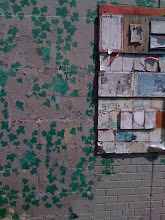
It’s no secret that fashion is obsessed with the miniature, such as waif-like models and short shorts with a half-inch inseam. However, on Saturday night, students who gathered in Hutch Courtyard to celebrate the beginning of the Festival of the Arts (FOTA) were greeted by a larger-than-life fashionable figure: “Gigantic Fashion,” a monumental eleven-foot dress designed by fourth-year Michal Lynn Shumate.
Shumate’s gargantuan garment was inspired by her knowledge of fashion’s love of the tiny. An art history major, Shumate just completed a thesis paper about fashion installations in which she discussed the House of Victor and Rolf’s presentation of their most famous designs on porcelain dolls in a gigantic doll house.
Also curious about fashion’s caricature of the large and ostentatious, such as enormous hoop skirts and opulent headdresses, Shumate wondered how dramatic changes in scale would affect the perception and reception of a garment. Clearly, when it comes to fashion, size matters. “Clothes are supposed to be worn. It’s not a painting,” Shumate pointed out. Generally, viewers are able to imagine themselves in the clothes because the items are scaled to the (granted, unrealistic and idealized) proportions of the human body. Shumate was curious about what happens to a viewer’s perception of clothes when the items are so clearly unwearable and fantastical.
Shumate’s enormous dress required Herculean effort to make. The circumference of the dress’s large skirt measures 20.6 yards, and the whole outfit required more than 42 yards of fabric. The project required 50 hours of sewing, almost three times as long as it took Shumate, who has designed for FOTA and MODA fashion shows before, to create human-sized ensembles. While constructing the dress was extremely time-intensive, Shumate faced other difficulties as well. “Working on the project was difficult because every time I wanted to work on it, I had to find a space large enough to accommodate all of the fabric,” she said. “If I wanted to spread out the fabric, I had to have a room-sized space.”
Working on the dress presented the problem of how to maintain a high level of craftsmanship while working on such a large scale. “Quite a bit of math was involved,” Shumate said. “I had to make X and Y-axes to figure out where to put things, and had to plot points along the edge of the pattern.”
Once the dress was finished, Shumate faced the trying task of figuring out how to display her mega-sized project. Fourth-year Katherine Greenleaf, who works as a scenic designer for University Theater, designed and constructed a structure to hold up and stabilize the garment. The dress is displayed on an adapted human frame constructed out of a lumber box, plastic bags, and a rough armature of a bust and torso to create the allusion of an hourglass shape. The faux-hoop skirt is made from rubber tubing.
Perhaps the most nerve-wracking aspect of the production was its final phase—installation in Hutch Courtyard. Because of the space limitations imposed by the garment’s size, Shumate had never seen her creation in its standing position until the end of the seven-hour installation process. “It was too tall to erect in the studio where I was working,” she said. “I knew that the measurements should be right, but I wasn’t positive everything would come together.”
Despite the stressful situation, Shumate kept calm, which was a welcome change for a designer accustomed to anxiety before a show. “The experience was much different from doing a fashion show, because my nerves eased up as the project went on,” she said. “With a fashion show, I’m too nauseous and nervous to eat the day of, and it takes a full day to recover. Once I started installing [the dress] and realized that it could be done, I relaxed.”
Shumate says that one of the biggest challenges she faces as a designer is combating the accusation that fashion is either “frivolous, or stuffy and boring.” With her intelligent, immense project, Shumate proves that big style and big smarts create big, beautiful results.
Photo credit: Tom Tian, The Maroon

No comments:
Post a Comment